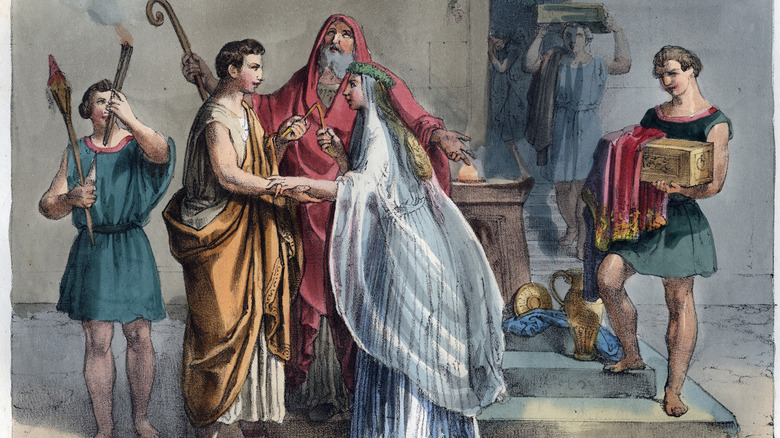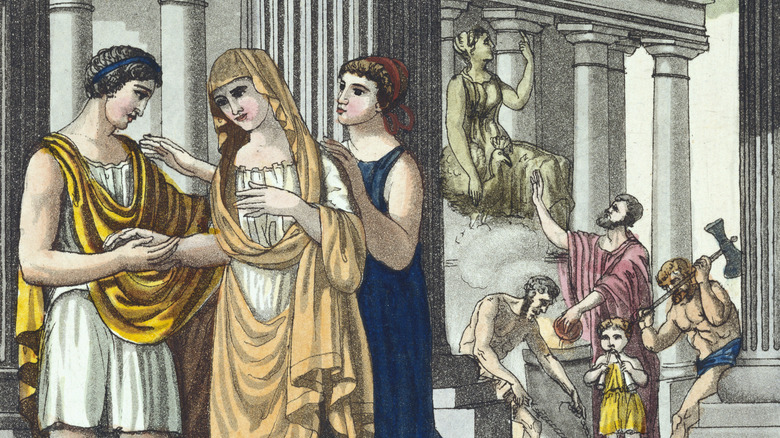Why The Roman Empire Preferred Loveless Marriages
The Roman empire was built on structure and strategy, and Roman marriages were no exception. Devoid of romantic notions, Roman marriage was an arrangement between families and, in many ways, a business arrangement.
According to PBS, Roman marriage typically took place between men in their mid-twenties and women in their early teens. Augustus Caesar ruled that Roman citizens were not allowed to marry prostitutes or actors. Roman weddings were simple affairs in which two families signed paperwork and exchanged gifts, possibly followed by a feast. The agreement was a personal one, not a legal one — it was primarily an agreement that two people would live together.
Divorce was similarly straightforward: the two people in the marriage would simply declare in front of seven witnesses that they did not intend to live together anymore. Women who were unfaithful were not permitted to remarry, but male infidelity was not recognized by the law. These double standards when it came to gender were a large part of the reason why loveless marriages were preferred in Roman society.
Romance was often seen as negative for gender-related reasons
The Roman marriage structure was strictly patriarchal, according to World History. Romantic love did exist beyond poetry in some cases, but for the most part, marriages were built on business savvy and sex was reserved for procreation. Men were leaders, and women were followers.
According to Psychology Today, females were seen as inferior to men from birth because, when it came to marriage, they required a dowry and did not "carry on the family name." Most women received no formal education. There were different kinds of marriage, but men held the power in each. In a "cum manu" marriage, a wife became her husband's daughter in legal terms. In a "sine manu" marriage, a wife was under guardianship of a man, usually her father, who had control over her assets and even whether she stayed in her current marriage or entered a new one.
Patriarchal marriage structures in Rome were also enmeshed with the gender-based virtues of the time. The female-focused virtue of "pudicitia," which roughly means modesty, relied on a woman being "univera," or "one-man woman," and only interacting with males she was related to. Men were expected to uphold "virtus," which is associated with martial courage and strength. For men, displays of romantic affection were associated with weakness; for women, they were associated with promiscuity.

